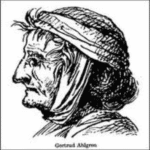They aren't witches!

“Those cunning folk use any means to achieve their ends.”Makes them sound a little bit nasty and ruthless. But I prefer to think of them a bit like Granny Merryweather, who knows that there is a job to be done and will not suffer fools gladly.
And they’ve been around for a long time.
FROM WIKI
The cunning folk in Britain were professional or semi-professional practitioners of magic active from the Medieval period through to the early twentieth century. As cunning folk, they practised folk magic – also known as “low magic” – although often combined with elements of “high” or ceremonial magic, which they learned through the study of grimoires.[1] Primarily using spells and creating charms as a part of their profession, they were most commonly employed to use their magic in order to combat malevolent witchcraft, to locate criminals, missing persons or stolen property, for fortune telling, for healing, for treasure hunting and to influence people to fall in love. Belonging “to the world of popular belief and custom”, the cunning folk’s magic has been defined as being “concerned not with the mysteries of the universe and the empowerment of the magus [as ceremonial magic usually is], so much as with practical remedies for specific problems.”[2] However, other historians have noted that in some cases, there was apparently an “experimental or ‘spiritual’ dimension” to their magical practices, something which was possibly shamanic in nature.Although the British cunning folk were in almost all cases Christian themselves, certain Christian theologians and Church authorities believed that, being practitioners of magic, the cunning folk were in league with the Devil and as such were akin to the more overtly Satanic and malevolent witches, the very existence of which is debatable. Partly due to this, laws were enacted across England, Scotland and Wales that often condemned cunning folk and their magical practices, but there was no widespread persecution of them akin to the Witch Hunt, largely because most common people firmly distinguished between the two: witches were seen as being harmful and cunning folk as useful.[4]
 The British cunning folk were known by a variety of names in different regions of the country, including wise men and wise women, pellars, wizards, dyn hysbys, and sometimes white witches. Comparable figures were found in other parts of Western Europe: in France, such terms as devins-guérisseurs and leveurs de sorts were used for them, whilst in the Netherlands they were known as toverdokters or duivelbanners, in Germany as Hexenmeisters and in Denmark as kloge folk. In Spain they were curanderos whilst in Portugal they were known as saludadores.[5] It is widely agreed by historians and folklorists, such as Willem de Blécourt,[6] Robin Briggs[7] and Owen Davies,[5] that the term “cunning folk” could be applied to all of these figures as well to reflect a pan-European tradition.
The British cunning folk were known by a variety of names in different regions of the country, including wise men and wise women, pellars, wizards, dyn hysbys, and sometimes white witches. Comparable figures were found in other parts of Western Europe: in France, such terms as devins-guérisseurs and leveurs de sorts were used for them, whilst in the Netherlands they were known as toverdokters or duivelbanners, in Germany as Hexenmeisters and in Denmark as kloge folk. In Spain they were curanderos whilst in Portugal they were known as saludadores.[5] It is widely agreed by historians and folklorists, such as Willem de Blécourt,[6] Robin Briggs[7] and Owen Davies,[5] that the term “cunning folk” could be applied to all of these figures as well to reflect a pan-European tradition.
One of the most common services that the cunning folk provided was in combating the effects of malevolent witchcraft and the curses which these witches had allegedly placed upon people. Alongside this, they were also known at times for identifying witches, and in this manner they were “the only healers to offer a comprehensive package of anti-witch measures.”[22] British cunning folk were known to use a variety of methods in order to cure someone of malevolent sorcery, including tackling the witch either physically or through the law courts, breaking the spell over the individual by magical means, and by using charms and potions to remove the witchcraft from the afflicted person’s body.[23] As historian Owen Davies noted, “Most cunning-folk employed a multi-pronged approach to curing witchcraft, using a combination of written charms, magic rituals, prayers and herbal medicines, thereby appealing to the physical, psychological and spiritual needs of the sick.”
So maybe there is a bit of Slytherin in Granny `Merryweather, but I’d like to think =there is also a lot of Gryffidor in Sam.
